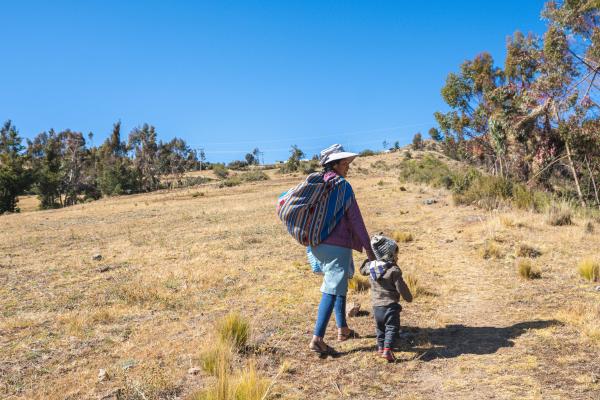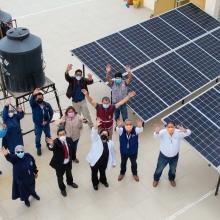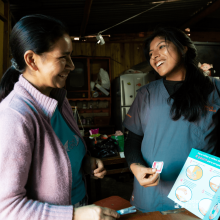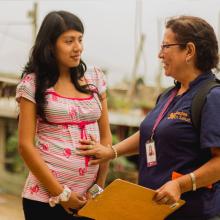The effects of climate change on people’s health are far from remote. The World Health Organization (WHO) indicates that up to 3.6 billion people live in contexts that are highly vulnerable to the consequences of this phenomenon.
In monetary terms, direct damage to health could cost between 2,000 and 4,000 million dollars by 2030. A situation that often affects those most in need, the organization warns, because the harms of climate change occur inequitably.
On this alarming scenario we spoke with Dr. Sonya Shin, associate professor at Harvard Medical School and physician associate in the Division of Global Health at Brigham and Women’s Hospital.
Along with Partners In Health and Socios En Salud, the specialist has been opening spaces for dialogue to gather the needs related to climate change that communities in Cusco, Lima and Navajo (USA) are going through.
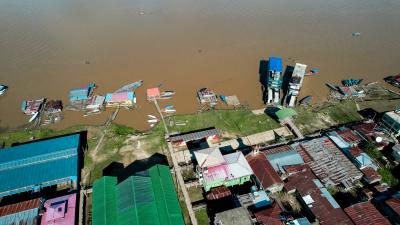
Entre sus acciones para luchar contra los efectos del cambio climático, Socios En Salud ha implementado paneles solares en distintas comunidades que padecen de falta de energía para sus centros de salud.
In general terms, how does climate change influence people’s health?
There are almost infinite ways in which climate change influences people’s health. The Earth is warming and the effects of this vary greatly by area and amplify the consequences of poverty, because in one place it can be affected by severe precipitation, a lot of rain, landslides, and so on. This manifestation of climate change will be different from another area where there is a lack of water.
In each site the manifestation is very specific.
But there are two things that are almost universal, as I understand it. One, people made vulnerable by the negative effects of poverty will be the most susceptible to climate change damage to their health. In the two communities where I work, I perceive that a global consequence is that (this phenomenon) impacts mental health. There you don’t know where the water is going to come from, if the harvest will not come this year or if there was a landslide and it destroyed the houses in the community. This uncertainty and anxiety of not knowing the future can impact from the mother to the child.
What other types of consequences does climate change have on health?
One can divide it into acute and chronic consequences. Acute ones can be, for example, damage, injuries, destruction of houses and displacement from severe events or fires, and so on. But, in chronic terms, a very important pathway - which we can see in the Navajo Nation and Peru - is the impact on food and water security. These are two aspects that go hand in hand. If you don’t have water, you don’t produce food and there’s no economy for many families who are involved in agriculture.
The Earth is warming and the effects vary greatly by area and amplify the consequences of poverty.
Besides affecting mental health, what other types of illnesses is this phenomenon producing?
What we are perceiving is the impact of climate change on chronic conditions, which can be, for example, diabetes, hypertension, chronic malnutrition, inadequate water intake that can lead to kidney failure. There is evidence in Guatemala, and other communities in Latin America, that people who work in the fields all day doing their crops, as the temperature warms up, are exposed to chronic dehydration and have a higher rate of chronic renal failure than other populations. We are kind of looking at this impact through water problems and lack of nutrition.
Does climate change also influence communicable infections?
It does. What we see in Peru with dengue fever, for example. We are seeing that the areas impacted by this disease are changing the habits of the mosquitoes themselves. In the United States, in the Southwest, some diseases that used to not appear in some places are migrating further north, because the heat allows the vectors to enlarge their territory.
What should be the actions of governments to address this climate and health problem?
If weather conditions are different in each area, conditions will vary, but some solutions must be local. A community can do things in its own territory. But at the country or regional level, a response is also needed. One solution may be more information and preparedness to monitor patterns. In Phoenix (USA), for example, every summer the temperature goes up, so they created a department that monitored heat trends, and when there was extreme heat, they made centers with air conditioning, water, and so on. On the other hand, it is urgent to prepare for access to water and food, problems that will affect especially the poorest populations.
From your position as a research associate, how have you observed Partners In Health and Partners In Health working on this issue?
I think it has a lot to do with consulting with the community. The Navajo Nation, for example, is home to indigenous people who have lived there for many centuries and they have their customs, their traditions and their teachings, and maybe they have some message or action to survive during lean periods. So we met with representatives to ask them what they are seeing and observing on the issue of climate change and especially as it relates to child health. The most important question we want to ask is: what solutions do they suggest? They may be based on culture or ancestral traditions, or they may be modern ideas that the community is already exploring or inventing today. A community response is needed so that the community itself has the power and the solution based on their view.
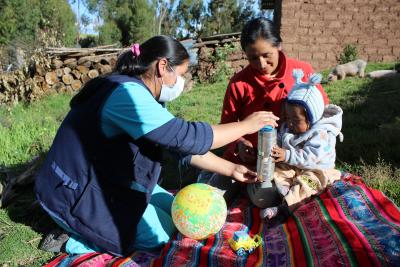
A través de sus programas, Socios En Salud busca llegar a diversas comunidades que considera prioritarias a fin de brindar una atención de salud integral.
I understand that you are opening spaces for dialogue also in two areas of Peru, one in Lima and the other in Cusco. What information have you been able to collect so far?
In Cusco and Carabayllo we conducted a baseline with the Maternal, Infant and Adolescent Health (SAMIA) program team of Socios En Salud. We did qualitative and quantitative data assessments. We were able to see that in Cusco almost all families feel water insecurity and are very concerned about climate change. Moms said that their older children ask about it, because they read things on the internet. The younger ones sense the mom’s anxiety. The problem in Cusco is very much linked to economic survival.
Does the same thing happen in Carabayllo or does the look change?
In Carabayllo, mothers perceive more problems with hygiene and health, and diseases such as diarrhea, skin complications, even with breathing because of the dust. Being cooped up and not being able to keep the house tidy due to lack of water, as they must choose whether to use it for drinking, cooking or cleaning the home. There, although the population, families and health professionals are aware of climate change and the relationship with water scarcity, produced by landslides, rains, extreme mud that Lima suffers sporadically, they do not feel it as daily as Cusco, where they think it will increase in the future. In addition, the economic part will have consequences on migration. There is a lot of information that talks about the waves of migration to the coast, to urban centers, and that will impact the health of children if they are families without access to health services. They talk about hygiene problems, mental health problems in older children, but also anemia, nutrition and development complications.
How do you perceive that Peru is preparing for this scenario?
It is strengthening health systems to respond to these problems, but it is somewhat difficult, because, although almost everyone agrees that climate change is a problem, it is difficult to see it on a day-to-day basis. Responding to a landslide is a little easier than responding to a “theoretical” problem that has yet to impact us on a day-to-day basis.
It seems that we do not see it, but it is there.
Yes, we understand it intellectually, but in the body, in the heart, we are not yet very aware. But this is quite different in Cusco. There they feel it in the soul, it is today.
